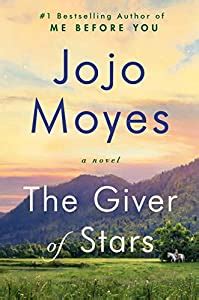If a library can be something as simple as an organized collection of texts, then libraries massively pre-date books in the history of culture. Every country has a tradition of legends, parables, riddles, myths and chants that existed long before they were written down. Warehoused as memories, these texts passed from generation to generation through dance, gestures, and word of mouth.
Description:
Every library has an atmosphere, even a spirit. Every visit to a library is an encounter with the ethereal phenomena of coherence, beauty, and taste.
In The Library, Kells shares his found treasures as well as his musings about book collections. He covers the first libraries, oral histories and song lines, all of which collected and shared the earliest cultural knowledge; the mighty Alexandria library; and Benedictine monasteries whose monks devoted their lives to gathering, copying and illustrating religious works (producing large, heavy tomes like The Devil's Bible which weighed in at 74.8 kilograms).
Kells reveals esoteric facts like the transition from clay tablets to papyrus, to parchment, to paper, and the changes required of libraries to store these various formats. Shelves had to become shorter in length and stronger to prevent sagging, and also become more uniform in height.
There are chapters on the lost libraries which suffered their complete demises via fires, floods, looting, and general neglect. It is heart-breaking to read about the early libraries which carefully collected and preserved fragile scrolls, manuscripts, and books, only to see them destroyed and the information lost forever.
Along the way we learn from the inexhautable Kells that:
- Papyrus is a terrible material for preserving texts. Without a large and unwavering commitment to conservation and copying, a library of papyrus scrolls will readily and unceremoniously disintegrate;
- Cuneiform was written and read left to right; Arabic right to left; Chinese top to bottom; and Ancient Greek, for a time, back and forth ("boustrophedon" or "ox-turning"), like plowing a field;
- America's major libraries were doubling en size every trwenty years from the 1870s to the 1940s, and every fifteen years after that.
- Gutenberg, although almost finished the first printing of his magnificant Bible, was sued by his financial backer for proceeding too slowly. Gutenberg lost the case, had his shop and presses confiscated, and was ruined;
- The British Museum's domed reading room has secret doors. To maintain the impression of an unbroken series of books around the walls, the dome's pillars and access doors are painted with false book-backs;
- Schusseried Abby solved the problem of untidy and uneven volumes (and the problem of damage from light) by storing its books in cabinets whose doors are painted with idealized volumes.
- Passionate about making and sailing paper boats, the poet Shelley could not resist turning [book] fly leaves -- along with letters, newspapers, and banknotes -- into little ships.
- [In 1968 at Northwestern University] a domino effect toppled twenty-seven ranges, spilling 264,000 volumes, splintering solid oad chairs, flattening steel footstools, shearing books in hald, destroying or damaging more than 8,000 volumes;
- A professor...from Ohio State University, stole pages from a fourteenth-century manuscript in the Vatican Library. The manuscript had once belonge to Petrarch.
Conaway, James. America's Library: The Story of the Library of Congress 1800-2000.
History of one of the greatest libraries of the current age, The United State Library of Congress. (Previously reviewed here.)
Happy reading.
Fred
Click here to browse over 470 more book recommendations by subject or title (and read the introduction to The First Sentence Reader).





